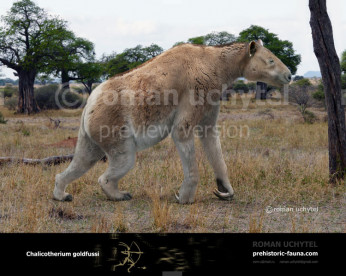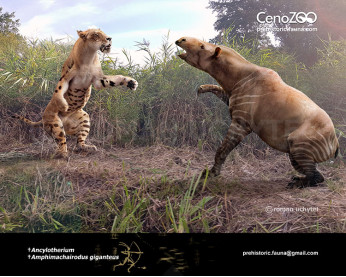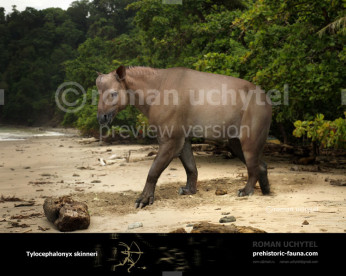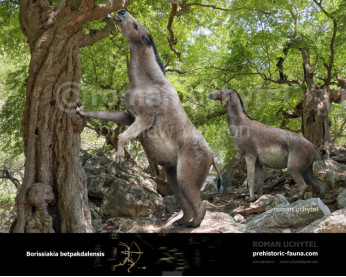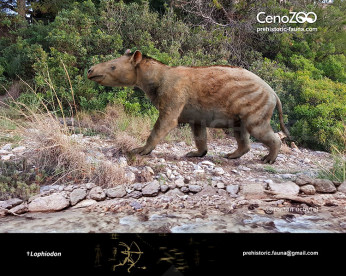Anisodon (Chalicotherium) grande
254254Anisodon grande (Chalicotherium grande Blainv)
Order: Perissodactyla
Family: Chalicotheriidae
Time period: late Miocene of Europe
Size: 2,2 m in length, 140-160 cm in height, 600 kg of weight
Anisodon, formerly known as Chalicotherium grande, lived in Europe during the Miocene. It was a king-size animal: the growth in the shoulders - 150 cm, weight is about 600 kg. Relatively short hind legs with hooves and long front legs with huge claws makes him not very harmonious outwardly, but quite adapted to life at that time. His clawed forepaws allowed to reach high branches, and claws can dig up the roots and tubers of plants. These legs also allows very effectively defend themselves from predators. Anatomically Chalicotheriidae closest to rhinos and horses, and the combination of more elongated forelimbs, compared with the hind legs, and the presence of claws presuppose that these animals were not fast runners. Some scientists consider the possibility of Chalicotheriidae even sitting position at rest. Chalicotheriidae occupying a unique ecological niches, morphologically divided into two types.The first type - Schizotheriinae with more high-coronal teeth and looks similar to horses (Moropus and Tylocephalonyx, who had a strange dome-shaped thickening of the skull). By the beginning of the Pliocene they became extinct except surviving in Africa Ancylotherium.
The second group - the Chalicotheriinae to which belonged Anisodon. Their body proportions were like a gorilla or giant ground sloth. Their greatest diversity is observed in the late Miocene.
Оплата
У Вас є кілька зручних способів купівлі зображення: кредитна чи дебетова картка Visa, Mastercard, Maestro; PayPal або банківський переказ
Anisodon grande (Chalicotherium grande Blainv)
Order: Perissodactyla
Family: Chalicotheriidae
Time period: late Miocene of Europe
Size: 2,2 m in length, 140-160 cm in height, 600 kg of weight
Anisodon, formerly known as Chalicotherium grande, lived in Europe during the Miocene. It was a king-size animal: the growth in the shoulders - 150 cm, weight is about 600 kg. Relatively short hind legs with hooves and long front legs with huge claws makes him not very harmonious outwardly, but quite adapted to life at that time. His clawed forepaws allowed to reach high branches, and claws can dig up the roots and tubers of plants. These legs also allows very effectively defend themselves from predators. Anatomically Chalicotheriidae closest to rhinos and horses, and the combination of more elongated forelimbs, compared with the hind legs, and the presence of claws presuppose that these animals were not fast runners. Some scientists consider the possibility of Chalicotheriidae even sitting position at rest. Chalicotheriidae occupying a unique ecological niches, morphologically divided into two types.The first type - Schizotheriinae with more high-coronal teeth and looks similar to horses (Moropus and Tylocephalonyx, who had a strange dome-shaped thickening of the skull). By the beginning of the Pliocene they became extinct except surviving in Africa Ancylotherium.
The second group - the Chalicotheriinae to which belonged Anisodon. Their body proportions were like a gorilla or giant ground sloth. Their greatest diversity is observed in the late Miocene.

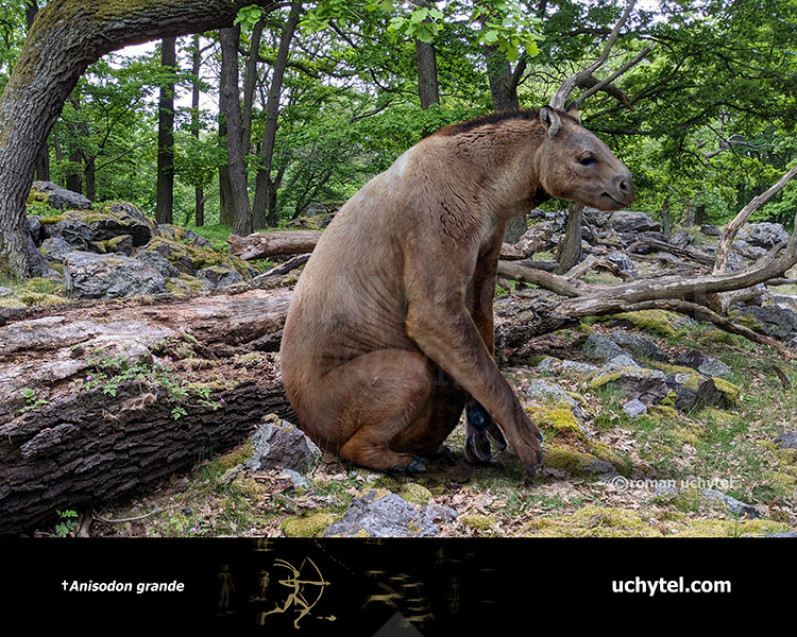
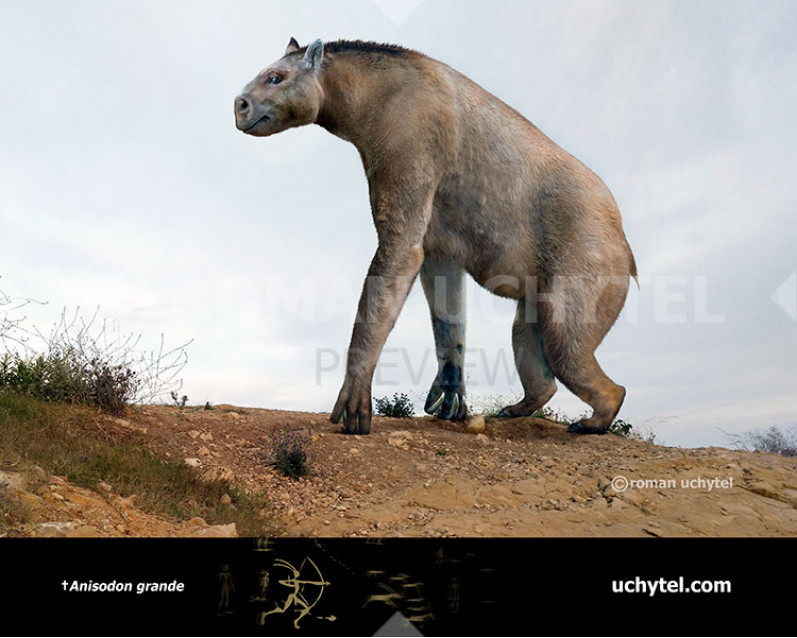
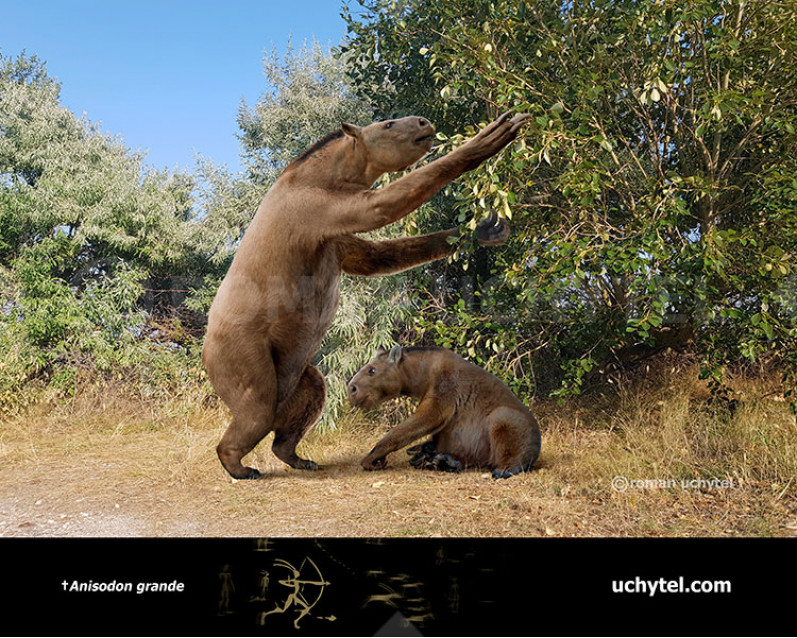
-3-797x638.jpg)
-2-797x638.jpg)
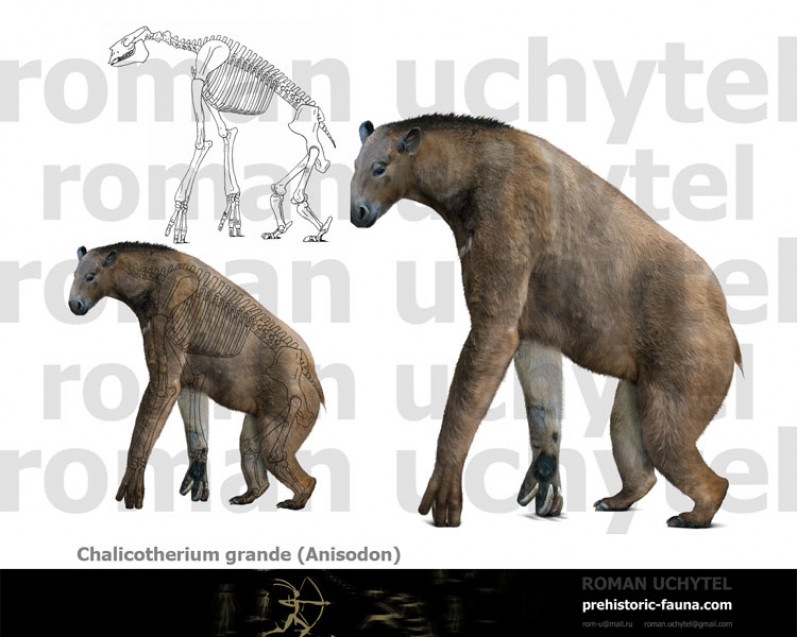



-3-70x56.jpg)
-2-70x56.jpg)

